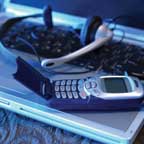
One of the new buzz terms of the year is “disaster recovery” or “business continuity.” These practices have come to the forefront largely due to the natural disasters that have occurred throughout the world in the past two years. In our region of the country, the threat of earthquakes, tsunamis, and hurricanes is very slim. However, we do have to be aware of disasters caused by weather or other factors. One of the worst mistakes any company can make is taking the attitude of “this could never happen to us.” By looking at disaster in that way, you’re putting yourself at risk and short-changing the health of your company.
No matter what type of disaster recovery/business continuity plan you’re composing, these questions must be addressed:
• Do you have a facility or a combination of facilities you could move your operation to? Can/should these facilities be close to your existing location?
• Assuming this alternate location is in another city, what’s the transportation path for your backup equipment? Do you need to line up an outside contractor to be available on call?
• Would all of the staff be going to the same place or separate spaces? Can some work from home, and what will they need to do that?
• If you need to separate employees, how are you going to communicate updates to everyone?
• Does the alternate facility have a telephone system that would allow you to forward your lines to a phone number there and simply rent phones on a temporary basis?
• Would it be more feasible to use a call routing service or a virtual rent-an-office to perform the main answering of your business lines on a temporary basis?
Before you focus too much time and energy on the telecommunications portion of your plan, first determine how much of your business practices are run by the telephone and how much by computer interfaces such as web ordering/chat, e-mail, etc. The voice component, while extremely important, may be the simplest business practice to address in your plan. If your business relies more on data practices, the plan simply could entail a method to call forward your main line to an assigned alternate position. This alternate position could be an employee’s home or cell phone. Then you’re free to work on the rest of your plan.
However, companies highly dependent on voice traffic should also explore the following:
• Design your lines properly. A digital circuit such as a PRI or T1 will receive higher priority from the telephone company in a disaster. These circuits will be repaired first. If you have plain old telephone (POTS) lines, you should assess whether it’s worth the additional monthly expense to make this change. Since there’s so much competition in this arena, I suggest checking with your present carrier and asking the direct question about any guaranteed response times in the event of a local or regional disaster. Whether you have POTS lines or a circuit, plot a course for forwarding the main number to your alternate location. This typically can be accomplished by a quick call or even logging into your personal account through the carrier web site. Remember to ask for multiple forwarding paths if you have a lot of calls coming in at one time.
• Experiment with your cell coverage. If the cell phone is your chosen method of alternate communications, don’t take your coverage for granted—test it. One of the problems documented during the hurricane aftermath was that cell towers had failed. Don’t use this as your only option in your regional plan.
• Enact your forwarding plan first. Then, when all is clear, you can move your lines back to your original facility. Even if your service appears to be working well, check with your carrier to validate the stability of the switching station. Some businesses in Florida found their carrier switches were held up by generators that failed days after the initial hurricane hit, and they were unprepared for the downtime.
• VoIP or IP Telephony is a good tool for disaster recovery. If you use hosted IP service, you simply pick up your phones and move them to your alternate location. Keep in mind you must have a data connection at this alternate location big enough to support your voice bandwidth. If you own a phone system capable of running IP Telephony, you could program/build your network so your remote location quickly can assume the position of main location without involving many outside parties.
• Set up a co-location within a carrier facility. This solution allows you to rent space and connect your main server equipment for your voice network in a carrier facility. You’re then using all of their backup power, etc. The connection to your other facilities would be controlled by VoIP technology.
• Set up a “skybox.” To effectively communicate with your staff, you could purchase a voice mailbox from a carrier. This voice mailbox would provide you a means to record updates to a single location and give employees a method of retrieving the necessary information at their convenience.
The last and most important aspect of disaster planning I’d like you to remember is this word: plan. Write it out, make copies of it, distribute it, and practice it. IBI

